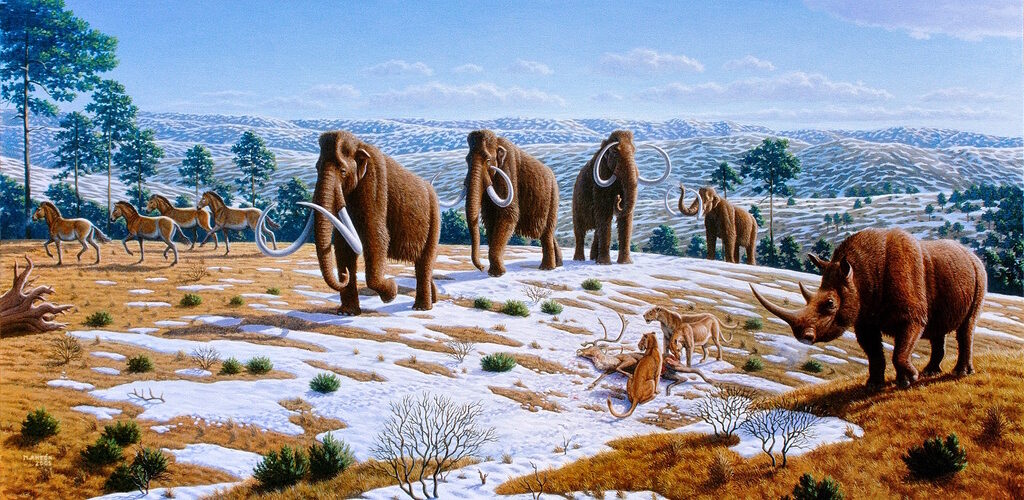
A new paper strongly bolsters that conclusion.3 In "Genomics of adaptive evolution in the woolly mammoth" a large international team of researchers sequenced genomes from 23 woolly mammoth remains and examined genes for proteins that had the most "fixed" amino acid mutations (that is, mutations that occurred in all of the genomes that were sequenced, and so very probably were widely present in the mammoth population). They evaluated the mutations by something called an "aggregated SIFT score." SIFT stands for "Sorting Intolerant From Tolerant."4 In the paper, the higher the aggregated SIFT score, the more likely the amino acid mutations were to not be tolerated by the protein's structure — that is, to disrupt the protein's activity. Of the 31 most highly mutated genes (Table S5), the great majority had high aggregated SIFT scores for the number of mutations they carried, and 21 of the genes each contained one or more "high impact" mutations (very likely to disrupt structure). Only four genes had low aggregated SIFT scores. (Interestingly, one of those is the BRCA2 gene, whose mutation in humans can lead to breast cancer.)
Revisiting Darwin Devolves
This seems like a good time to reiterate what I wrote in Darwin Devolves in 2019:5
Thus, although these are difficult matters to test directly, and although the more widely two species are separated in time the harder it is to interpret changes, it seems very likely that degradative modification-of-function and loss-of-FCT mutations drove much of mammoth evolution. If so, then not only do beneficial-degrading changes explain modern evolution from bacteria to bears, but also the evolution of now-extinct species that arose millions of years in the past.The blazingly obvious lesson from woolly mammoth studies and many other ones, too, is that it is much faster and easier to break or blunt a gene than to improve or make a new one. Thus, if a helpful effect can be had by degrading or destroying genetic information, the blind watchmaker will toss it out in an evolutionary instant, well before any constructive mutations meander onto the scene. That's certainly not the kind of process that would be expected to build complex machinery in the first place.
Michael J. Behe is Professor of Biological Sciences at Lehigh University in Pennsylvania and a Senior Fellow at Discovery Institute's Center for Science and Culture. He received his Ph.D. in Biochemistry from the University of Pennsylvania in 1978. Behe's current research involves delineation of design and natural selection in protein structures. In his career he has authored over 40 technical papers and three books, Darwin Devolves: The New Science About DNA that Challenges Evolution, Darwin's Black Box: The Biochemical Challenge to Evolution, and The Edge of Evolution: The Search for the Limits of Darwinism, which argue that living system at the molecular level are best explained as being the result of deliberate intelligent design.Notes
- "Mammoth Support for Devolution", Evolution News, August 15, 2022
- Van der Valk, Tom, et al. 2022. Evolutionary consequences of genomic deletions and insertions in the woolly mammoth genome. iScience 25, 104826.
- Díez-del-Molino, D. et al. 2023. Genomics of adaptive evolution in the woolly mammoth. Current Biology, https://doi.org/10.1016/j.cub.2023.03.084.
- Ng, P.C. and Henikoff, S. 2003. SIFT: predicting amino acid changes that affect protein function. Nucleic Acids Research 31: 3812-3814.
- Behe, M. J. 2019. Darwin Devolves: The New Science about DNA that Challenges Evolution. New York, NY, HarperOne, p. 196.



more adaptive and useful genes for advancing future life forms. Ergo, it is evolution in action.